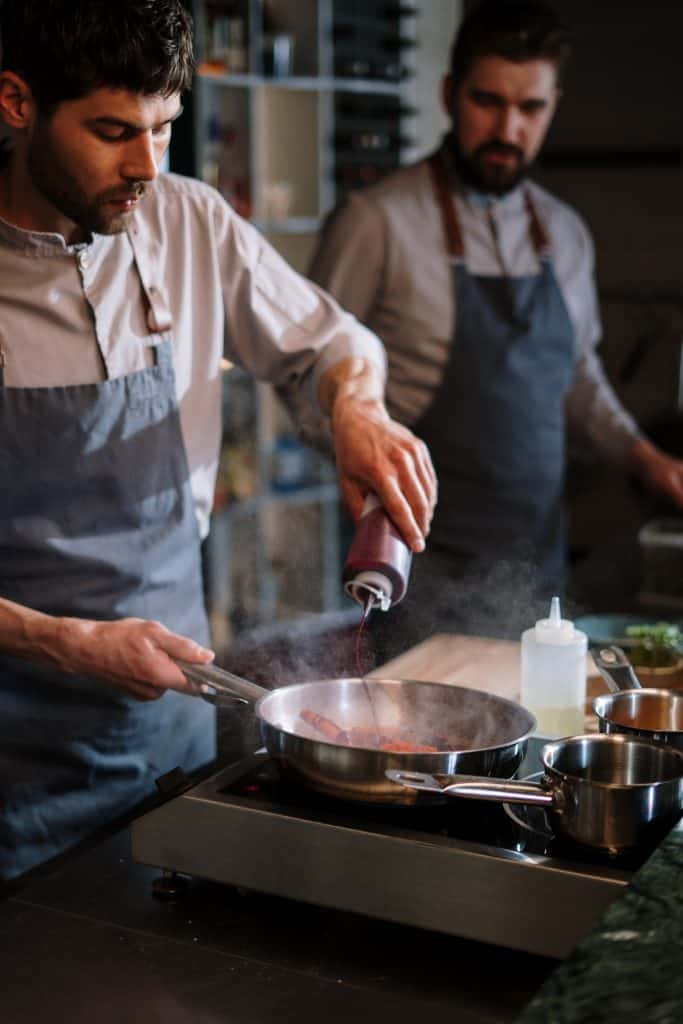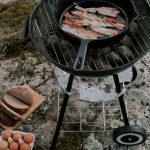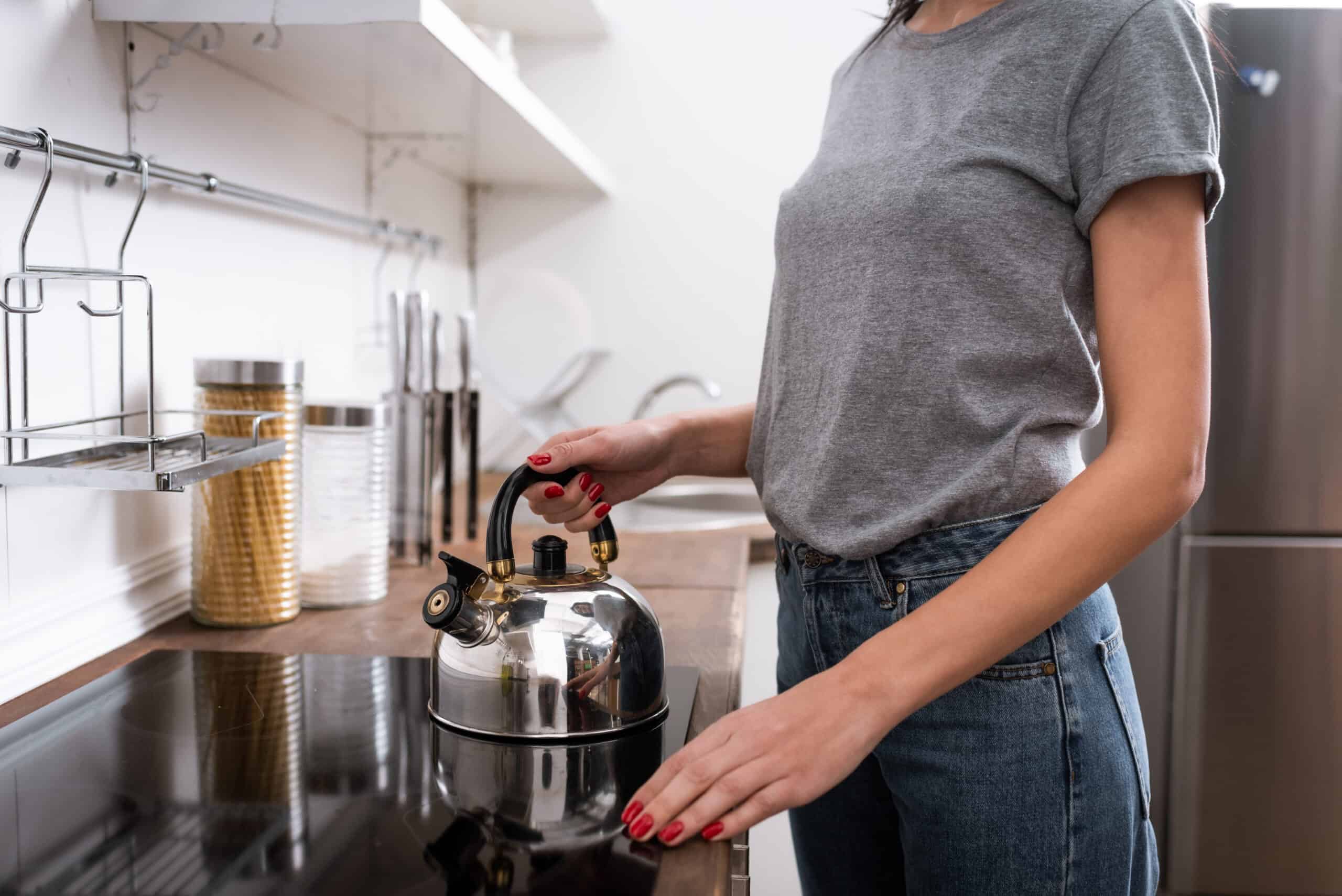Frying pans are a home cook’s essential tool. Used for everything from cooking eggs to frying chicken, these pans are a staple. But how hot can a frying pan get, and if the old saying “if you can’t handle the heat, get out of the kitchen” is true, how hot is too hot?
A frying pan can get as hot as 600°F (315.55°C) for stainless steel, up to 700°F (371.1°C) for seasoned cast iron, and up to 660°F (348.88°C) for nonstick (though the pan will start to smoke over 400°F (204.44°C). Unseasoned cast iron pans can safely reach 1500°F (815.6°C).
The reality is, it isn’t always easy to know how hot your frying pan is. Read on to learn more about frying pan temperatures and how you can work your culinary magic without burning down the house or scorching your grandmother’s fried chicken recipe.

Can You Measure Frying Pan Temperature?
Frying pan temperature isn’t as easy to measure as the food or oil that goes into the frying pan, but it can be done.
You can measure frying pan temperature easiest by using a thermometer. If you don’t have a thermometer, put a spoonful of water into the hot pan. If a few beads form quickly and bubble rapidly, your pan is ready for oil. Check oil temperature using a wooden spoon to see if bubbles form on contact.
This video walks you through the process of testing your pan’s temperature using water:
However, it’s much easier to measure the ingredients in the pan than the pan itself. Usually, cooks monitor the pan’s temperature to avoid burning their food or splattering if using oil.
- Regardless of which method you use, the best way to combat potential issues is to familiarize yourself with suggested cooking temperatures and times, which we’ll go over below.
What Is Low Heat?
Low heat occurs in pans ranging from 200°F – 300°F (93.33°C – 148.88°C) and is only used for slow cooking. An example of when low heat is best used is to cook an omelet in the French style, as using a very low-temperature setting will avoid browning.
For lower-temperature cooking, a nonstick frying pan may be most recommended. It’s easy to clean and easy to cook delicate foods such as fish and vegetables.
What is Medium Heat?
Medium heat is the best all-purpose temperature for cooking. It occurs in pans ranging from 300°F – 400°F (148.88°C – 204.44°C). Most cooks pan-sear, cook and fry at this temperature. Foods to cook at a medium heat include pancakes, eggs, steaks, vegetables, salmon, and pan-seared or fried chicken.
What Is High Heat?
This is the heat to use for searing meats. High heat occurs in pans ranging from 500°F – 600°F (260°C – 315.55°C). You might use this heat to quickly sear a steak to get a lovely brown crust on it before lowering the temperature to allow the meat to finish cooking.
How To Monitor the Temperature of Your Frying Pan
Monitoring the temperature of your frying pan isn’t hard, but it does take a bit of effort. Pan temperature changes quickly once you put food in the pan, and if you’re cooking more than one batch of food, the temperature may rise and fall several times.
Here’s how to monitor the temperature of your frying pan.
- Bring your pan up to the desired heat slowly. Turning your pan immediately on high isn’t advised unless you are boiling water.
- Avoid overcrowding the pan, as that can quickly reduce the temperature.
- Be prepared to adjust as needed. If using cast iron, remember that the pan continues to get hotter as it sits.
- Use a thermometer in the pan whenever possible. This will help you avoid your food browning too quickly or getting overcooked, and if you see the temperature of your pan rising too quickly, it can alert you to turn the heat down.
Here are some recommendations for different types of thermometers you can purchase to help you out in the kitchen:
- If you’re in need of a surface thermometer: Try the Cuisinart CSG-100 Surface Thermometer (available on Amazon.com). This thermometer has anti-fog capabilities for visibility, and can identify hot spots in minutes!
- For especially hot surfaces: Try the Cuisinart CSG-625 Infrared Surface Thermometer (available on Amazon.com). No touching is required, keeping you safe from burns.
- For meat, use an instant-read thermometer: The Cuisinart CSG-111 Instant Read Digital Thermometer (available from Amazon.com)automatically shuts off after 15 seconds to retain solid battery life.
Best Material Frying Pan That Holds the Most Heat
Cast iron pans hold the most heat, withstanding temperatures over 1,000°F (537.77°C). It’s most recommended for frying foods like deep-fried chicken or catfish because it often heats evenly and creates golden brown crusts.
As cast iron pans come in many sizes, you can even cook up to two whole chickens in one 17-inch (43.18-cm) fry pan, like the Lodge Seasoned Cast Iron Skillet from Amazon.com. Lodge is a popular brand that’s respected for its quality products.
Whether you use a nonstick frying pan, a stainless steel pan, or a cast-iron skillet, you can cook delicious food with tasty results. Which pan is “best” is subjective and varies by the chef, but whichever frying pan you choose, it’s best to understand what heat you anticipate using and what you might cook in it.
Conclusion
A frying pan can get hot! How hot a pan can get depends largely on the type of pan, and, as we’ve covered above, it’s not wise to push your point to its maximum heat point.
Letting the frying pan’s temperature get too hot can cause a nonstick or stainless steel pan to smoke or deteriorate the coating on your nonstick pan. Excessive temperatures can cause cast iron to melt as well.
Be cautious, get to know your pan and your stovetop, and you’ll soon be heating your fry pan properly and cooking with ease.
Sources
- The Kitchen: 10 Things You Should Never Do With Your Stainless Steel Pans
- Food Network: French Omelette
- Food Network: Fried Chicken
- Oven Spot: How Hot Can a Dutch Oven Get Before It’s Dangerous?
- Youtube: How to Know Your Frying Pan is Hot Enough
- Kitchen Stories: How to Reach the Perfect Temperature for Frying
- Fine Dining Lovers: How to Tell if a Pan is Ready at Medium-High Heat
- Teflon: Safety of Teflon Nonstick Coatings





